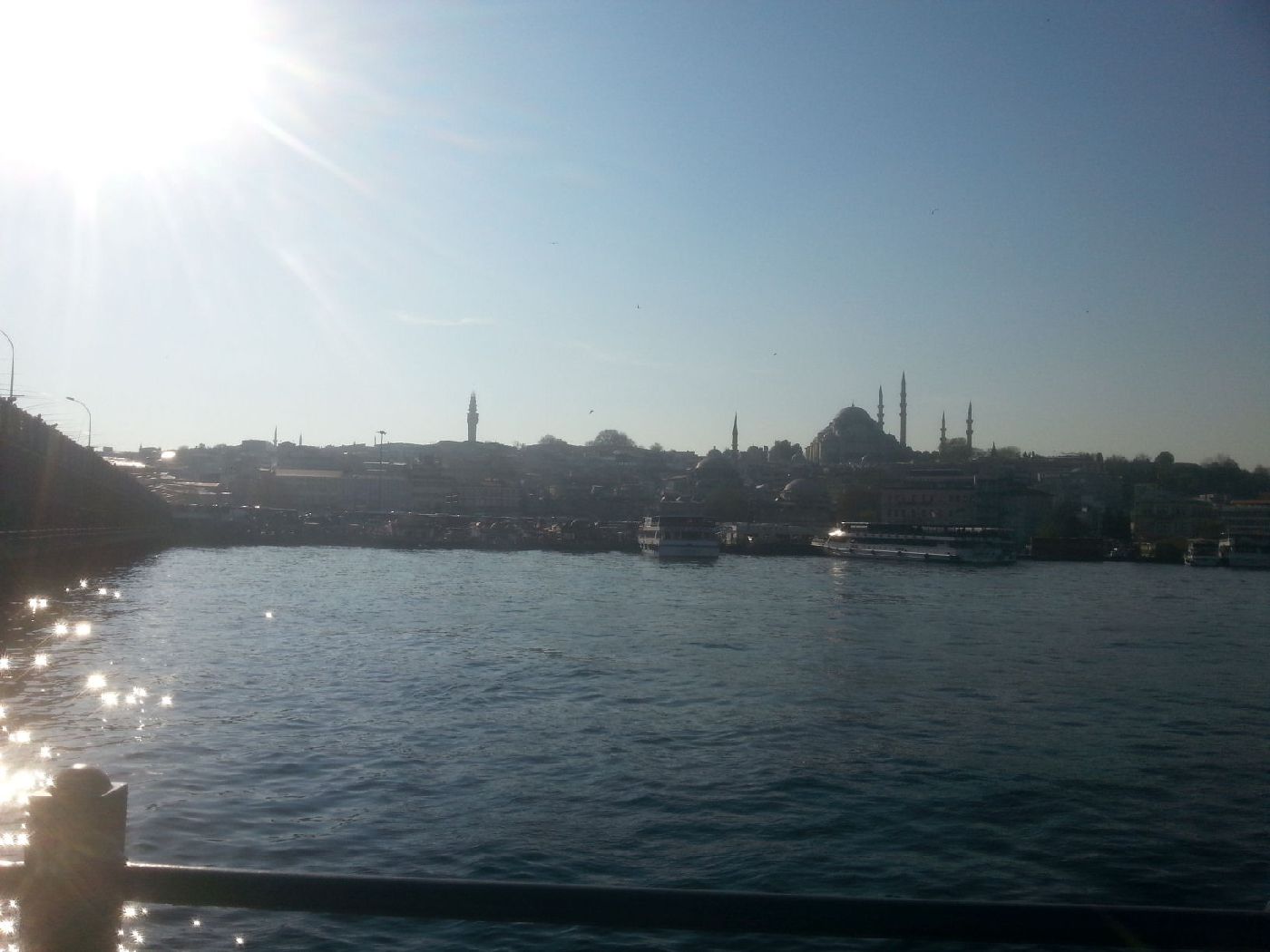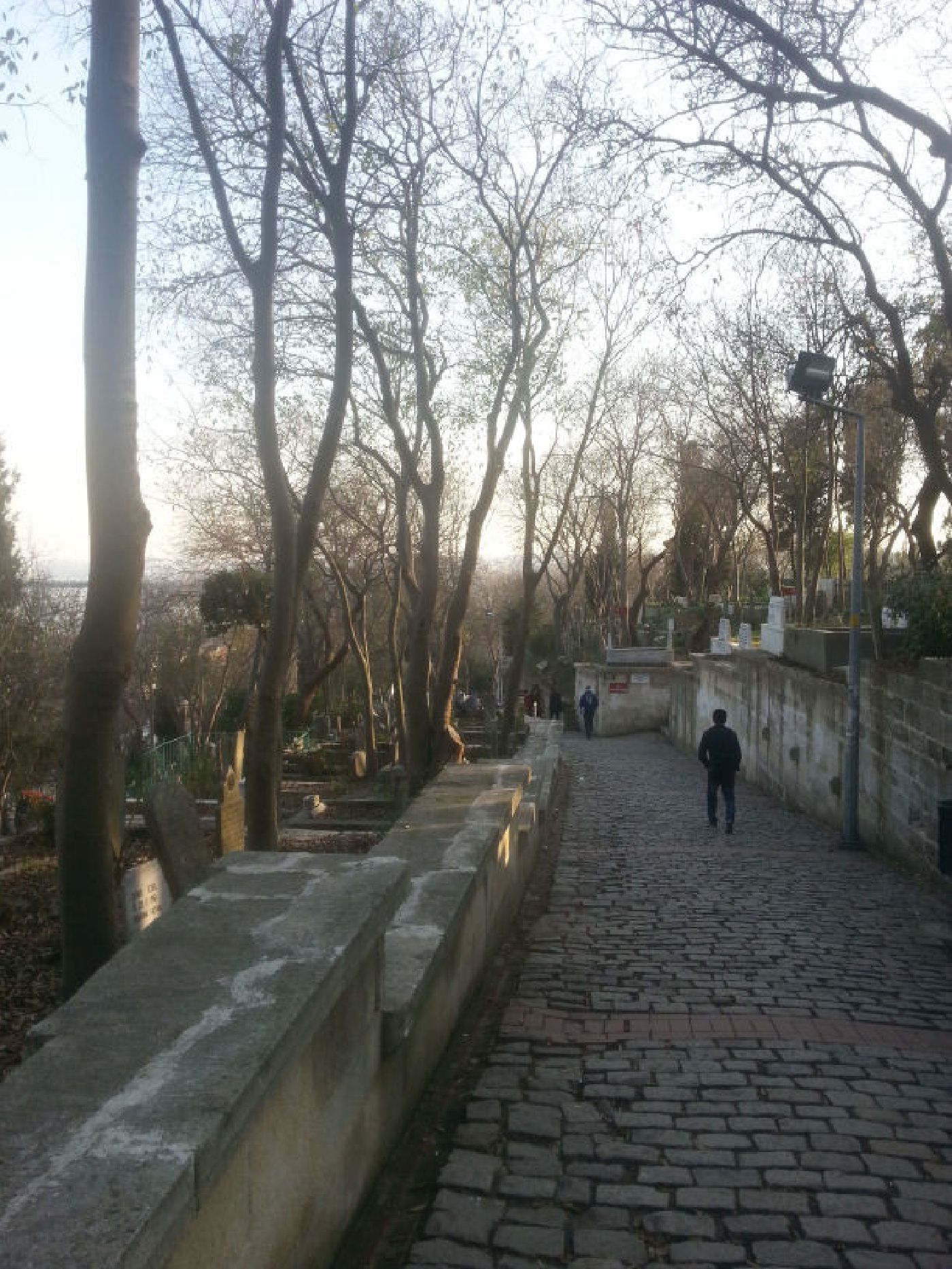
I got bored one afternoon.
The day before I had gone to the docks at Eminonu, next to the Galata bridge. It was busy and vibrant. The place was filled with people. Hustle and bustle. Eating fish sandwiches and drinking bright red pickle juice from one of the boats bobbing on the quayside. Each vessel pitching violently and the flaming grills looked terrifying to be around.
Sunday was different. Sunday was quiet. Only a handful of people around. The afternoon was sunny but cold, an icy wind blowing in off the Golden Horn. The big plaza was empty and the concrete benches were stark and grim. Thrown away newspapers and fish wrappings blew around, catching here and there on a lamp-post or a step.
What to do? I took a walk along the lower gallery of the Galata Bridge, thinking about eating in one of the fish restaurants. All closed. Boat trip? I could get a ferry just to say I'd been to Asia but that seemed like a waste of an afternoon.

Eyup looked interesting and there was a ferry that ran up the Golden Horn. The terminal is not easy to find. It is a little wooden hut tucked out of the way. Beyond the main ferry terminal. Beyond the bus terminal. Beyond the tourist cruise boats, looking desperate for trade on a midwinter's afternoon. I bought a jeton and passed through the turnstile.
There is only one ferry an hour and eventually it turned up. It was bitterly cold once it got moving but I stood outside at the stern. I watched the ancient city pass by and realised that this was how it was meant to be seen. This is what the emperors, Romans and Greeks and Ottomans, wanted you to see.
It looks theatrical, like someone had painted it on a set backdrop, from the water. Two thousand years are stretched out in front of you, every age and every phase of Istanbul's history. The Haghia Sophia just visible. A mosque on every hilltop. The Valens aqueduct could not look any more Roman if it tried. The modern Halic, Ataturk and Metro bridges in contrast. Drifting along past the old Greek quarter, the Patriarchate, the domes of the Church of the Pammakristos, the old Greek college looking like any number of bad English civic buildings from the turn of the century. The big, grey bulk of the iron church of the Bulgarians. The city walls tumbling down to the sea and the remains of a palace drift past.
The ferry zig-zagged its way up the Golden Horn, stopping on one side and then the other as it went. Inside the windows were steamed up, trays of tea glasses whizzing past, people crowded inside away from the cold. On deck were only a handful of people. We were the ones who did not see this view every single day and would put up with the bitter wind just to look out. Next to me was a group of men whose home I could only guess at. They wore silk, embroidered caps. They had oval, Asian faces. Long tunics hung down below the hems of their winter coats. It gave me a sense of what a great crossroads I was at.
Almost an hour later the ferry pulled into the quay at Eyup. People poured off. Simit sellers touted for business. The air was clear and crisp and wintery. Green hills circled the little port, flecked with white like patches of snow. A cable car snaked its way up one of the hills. Calm water and pine trees, hills coming down to the sea, the cold and the sunshine. Weirdly, I felt like I was back in Scotland. It could be the west coast, a little Argyll fishing town.

I crossed the busy road and walked north towards the hills. A cobbled and stepped lane climbed its way up. And I realised that the white flecks were not snow but graves. Hundreds and hundreds of white stone markers. Ottoman gravestones, pillars about a metre high carved with beautiful Arabic calligraphy. This was a city of the dead. It had lanes with names and signs, grave plots were numbered. Arrows with family names pointed to little paths or steps that dropped precariously down the hillsides.
I climbed the main path. Terraces of graves were everywhere. Crowds of people, families and couples and children, went the same way. Just a Sunday afternoon stroll. It was one of the loveliest cemeteries I had ever visited. Peaceful. The tombs were amongst trees, the grave markers like part of the forest. In tune with nature. The graves were well tended, these were not forgotten people.
.